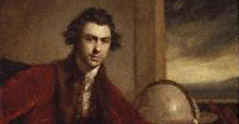|
CHURCH MISSIONARY SOCIETY ARCHIVE
Section I: East Asia Missions
Part 10: China Mission, 1834-1914
Part 11: South China Mission, 1885-1934
Part 12: South China Mission, 1888-1934
Part 13: Chekiang Mission, 1885-1934
Part 14: Chekiang Mission, 1888-1934
Introduction to Part 13: Chekiang Mission, 1885-1934
Part 13 contains the papers of the Chekiang Mission. It includes the Letter Books, 1897-1934 and the Original Papers, 1885-1905.
The Letter Books, containing copies of outgoing correspondence from the Secretary in London to the missionaries and mission secretary, contain material on official and personal matters including all aspects of mission finance and administration. There are letters to missionaries on all manner of subjects including: interesting information on footbinding; letters to the mission secretary covering topics such as resignations, furloughs, salaries, missionary probation periods, travel to China, accommodation, health, deaths, mental breakdowns. There are Committee Minutes; Rules for the Mid-China CMS Women’s Conference; Memoranda re Women’s Work, Episcopal Jurisdiction in Shanghai, the Anglo-Chinese School; Circulars re the outbreak of war in 1914 and the Native Agency; discussions on the relations between doctors and staff at Hangchow Missionary Hospital; descriptions of the work done with the leper mission; details of new building work to be done at the mission stations and money to be allocated to the Biblewomen.
The Original Papers are the incoming papers sent by the missions to London. They contain letters regarding all manner of subjects: the first impressions of missionaries on their arrival in China; suggested lists of what items and clothing new recruits should take to China, with comments such as “ …avoid taking too much luggage…live as nearly as possible to European fashion…do not eat Chinese food….”; a letter about the imminent war in North China from Miss Ella Green at Ningpo stating “ Isn’t it a privilege to be living in such intensely interesting times: and in China too!” Dr Kimber’s letter from Hangchow Hospital written ten days later has a slightly different feel. “ They (the Boxers) burned the Ost’s home – the ladies house and the Girls School all to the ground….We feel very much like rats in a hole living in the city here.” There are letters from the Foreign Office assuring CMS the safety of the missionaries in China during the Boxer Rebellion. This is followed by lists of the missionaries and members of their families who had been killed in the troubles – 64 including children. There are letters from missionaries requesting furloughs, increases in salary, permission to marry, descriptions of their travels in the countryside around the missions. Journals of the missionaries provide great detail on their work and their everyday life: a trip into Chuki in 1905 to see some of the Chinese people in the old mission stations is described by a lady missionary, “Two women came to hear the Gospel…. But the mind of the average (Chinese) woman is so stunted and dull in grasping a new idea, that (though I fear it does not sound very proper to say so,) I much prefer an audience of men”.
Reports and Minutes of all kinds are to be found including: Reports of the Mid-China Conferences and Ladies Conference, Minutes of the Ningpo Native Church and the Shanghai Finance Committee, Reports from the Society for the Oppression of the Opium Trade, the Hangchow Medical Mission Hospital, the Ningpo Girls Boarding School and the Hao-Meng-Fong Hospital at Ningpo.
Items related to finance cover topics such as: discussions about missionary salaries, costs for building a new hospital and training college, expenses of the Medical Training College and Hangchow Hospital and annual grants. There are also statistics regarding work done with opium smokers, the amount of travelling done by missionaries, statistics for the missions showing baptisms taken place, number of Native Clergy and boy and girl Chinese scholars.
Miscellaneous items include: information on the role of Biblewomen in China, notices of examinations in Chinese, requests for ladies to go to China and run an orphanage for Eurasian girls in Shanghai, the uncertainty of letters reaching England from China as ships were liable to founder, notes and plans for a Ladies House in Hangchow, Lists of Agents, Evangelists, Schoolmasters and women, Biblewomen and medical evangelists and an article on the position and work of women missionaries. There is one outstanding item - a very beautifully but luridly illustrated booklet “The Cause of the Riots in the Yangtse Valley” which is a reproduction of a book circulated by the Anti-Foreign Party in China.
There are newspaper cuttings covering subjects as varied as the activities of the Shanghai Church Missionary Local Association and the complaints of a missionary regarding the rickshaw traffic in Shanghai.
Printed material includes: a pamphlet on The Importance of Promoting Self-Support among Native Churches, a memorandum on Foot Binding in China, the pamphlet of The Heavenly Foot Society, a leaflet on The Remarkable Progress of the Anti-Footbinding Movement, The Bulletin of the Hankow District American Church Mission, China and a pamphlet of The Christian Literature Society for China.
<back
|
|















